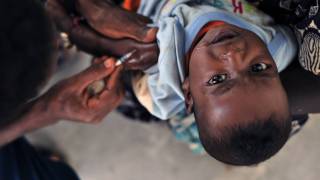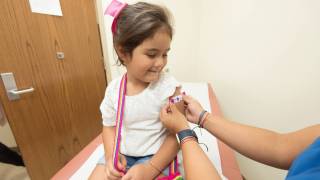Did Measles Vaccine Apathy Start During the Turbulent 1960’s?

Various health experts have pointed to ‘apathy’ as a key factor in the ongoing battle to eliminate measles through universal vaccination.
Apathy is often considered a human reaction to a belief, and could be related to what is now called ‘vaccine hesitancy.’
In a recent article published in the Canadian Medical Association Journal, researchers point to the turbulent 1960s as the source for today’s vaccine distrust.
“Understanding the past is essential to explaining Canadians’ decisions regarding measures to prevent disease and enhance their health,” said these researchers.
Heather MacDougall, Ph.D. and Laurence Monnais, Ph.D. studied measles vaccination trends in Canada between 1963–1998 and concluded, at least in part, issues of accessibility to efficient vaccines, poor training of health care providers and an enduring lack of political will to implement a single vaccination schedule throughout Canada.
The situation was further complicated by the general erosion of social trust in experts and lack of education about and promotion of vaccines.
They found that the vaccine hesitancy phenomenon in Canada started before the 1990s, and it was probably due to scandals, like the European thalidomide disaster of 1962, along with the emergence of new styles of parenting, second-wave feminism, and the popularization of alternative medicine.
Measles outbreaks in the 1970s and 1980s corresponded with a shift to an individual rather than collective responsibility for personal health and health promotion, according to this study.
By the 1990s, the national and international focus on children's rights and child health made young parents more willing to question whether their child would benefit from vaccination.
The division of powers regarding health care has created a systemic disadvantage for the consensus needed to develop a consistent national immunization program in Canada.
In Quebec, the Quiet Revolution lead to the rise of the nationalist movement and the advent of Medicare provided the impetus for Dr. Paul-Émile Chevrefils to launch a movement against mandatory smallpox vaccination and for medical freedom.
Dr. Chevrefils predictions of the emergence of a “nouveau Québécois,” whose good health was based on eating organic food and rejecting pharmaceutical products, were widely covered in the media.
Claiming that many parents regarded measles as a benign childhood disease, medical experts tried to shift the discussion by citing the dangers of the disease and the cost benefits of its prevention.
During the 1970s, as the provinces adapted to Medicare, vaccination experts lamented a lack of uptake of the measles vaccine and estimated that 25% of children in Ontario and 50% in Quebec had not received their shots in 1975.
Many people were also confused by the conflicting vaccination schedules proposed by the Canadian Paediatric Society, the Ontario Ministry of Health and the World Health Organization.
Over time, some of these problems were rectified through the creation of the Canadian Immunization Guide and, starting in 2002, vaccinology training became part of residency programs.
Bowing to intensifying pressure from the Pan American Health Organization to eliminate measles in the Americas, the Canadian government established elimination target dates for measles and rubella and agreed to purchase vaccine for a national “catch-up” campaign in 1996–97.
Canadian experts were finally able to claim that indigenous measles had been eliminated by 2002. Subsequent outbreaks in 2007, 2011, 2014–15 might have resulted from imported cases.
Measles remains a common disease in many parts of the world, including areas in Europe, Asia, the Pacific, and Africa, according to the US CDC. Worldwide, 19 cases of measles per 1 million persons are reported each year; about 89,780 die.
In the United States, most of the measles cases result from international travel. The disease is brought into the United States by unvaccinated people who get infected in other countries, says the CDC.
These unvaccinated people spread measles to others, which can cause outbreaks.
Anyone who is not protected against measles is at risk of getting infected when they travel internationally.
In the USA, the MMR-II and ProQuad vaccines both contain the protection for measles.
Most pharmacies offer MMR and ProQuad vaccination services.
The CDC Vaccine Price List provides private sector vaccine prices for general information. Vaccine discounts can be found here.
Vaccines, like any medicine, can have side effects, says the CDC. You are encouraged to report negative side effects of vaccines to the FDA or CDC.
Our Trust Standards: Medical Advisory Committee

























